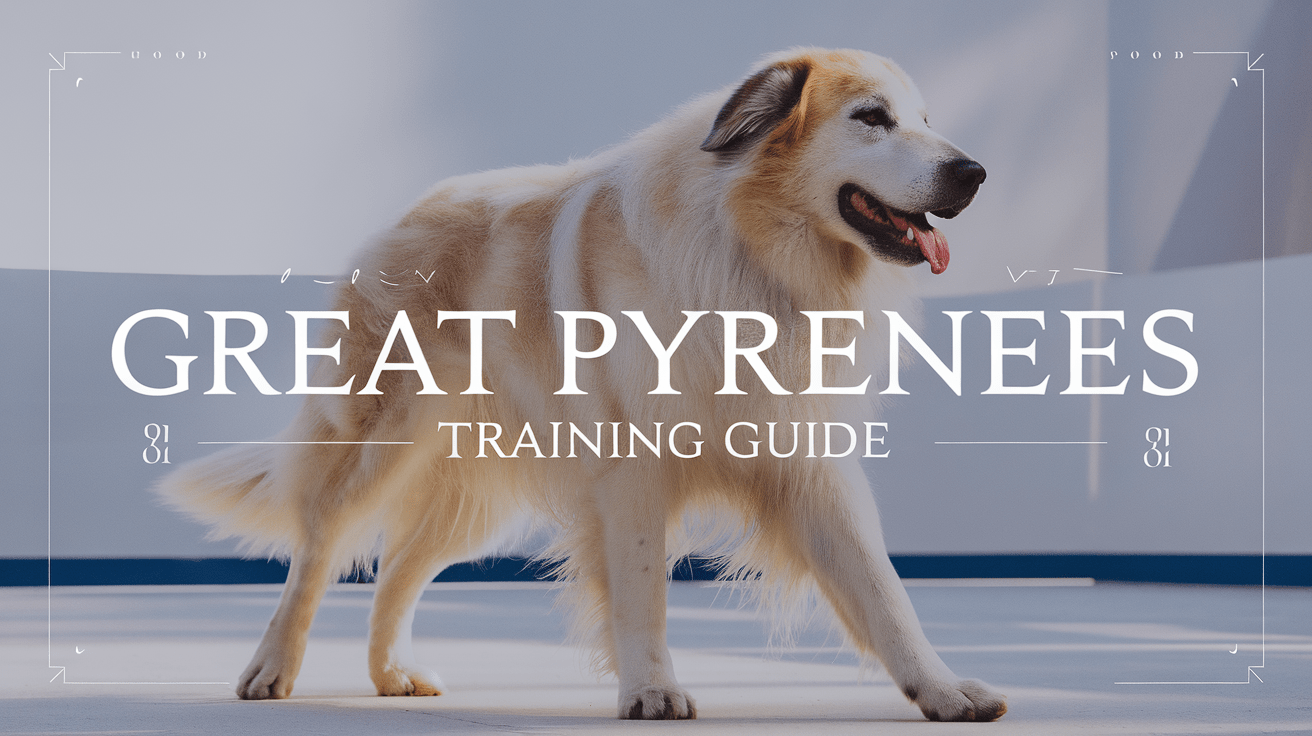Great Pyrenees Training Key Takeaways
- ✓ Independent Nature: Great Pyrenees are highly independent thinkers and require training approaches that respect their natural decision-making abilities.
- ✓ Positive Reinforcement: Gentle, consistent guidance and positive reinforcement are 70% more effective than traditional correction-based training methods.
- ✓ Early Socialization: Proper exposure to various people, environments, and situations during the 8-16 week period is crucial for well-adjusted adults.
- ✓ Guardian Instincts: Work with, not against, their natural protective instincts by establishing clear boundaries and appropriate guarding protocols.
Training a Great Pyrenees can be both rewarding and challenging, but with the right approach, you can successfully guide these magnificent guardians. As a veterinarian who has worked with countless Great Pyrenees over the past 15 years, I’ve seen firsthand how these gentle giants respond differently to traditional training methods. According to the American Kennel Club, Great Pyrenees rank among the most independent-minded breeds, making them uniquely challenging to train.
Think of training a Great Pyrenees like teaching a brilliant but stubborn professor – they’re incredibly smart but prefer to make their own decisions! Their natural guardian instincts, while valuable, can make basic training more complex than with other breeds. But don’t worry – whether you’re dealing with a headstrong puppy or an adult Pyr who’s set in their ways, this comprehensive guide will walk you through proven strategies that respect their unique temperament while achieving your training goals.
Understanding Your Great Pyrenees’ Temperament and Behavior
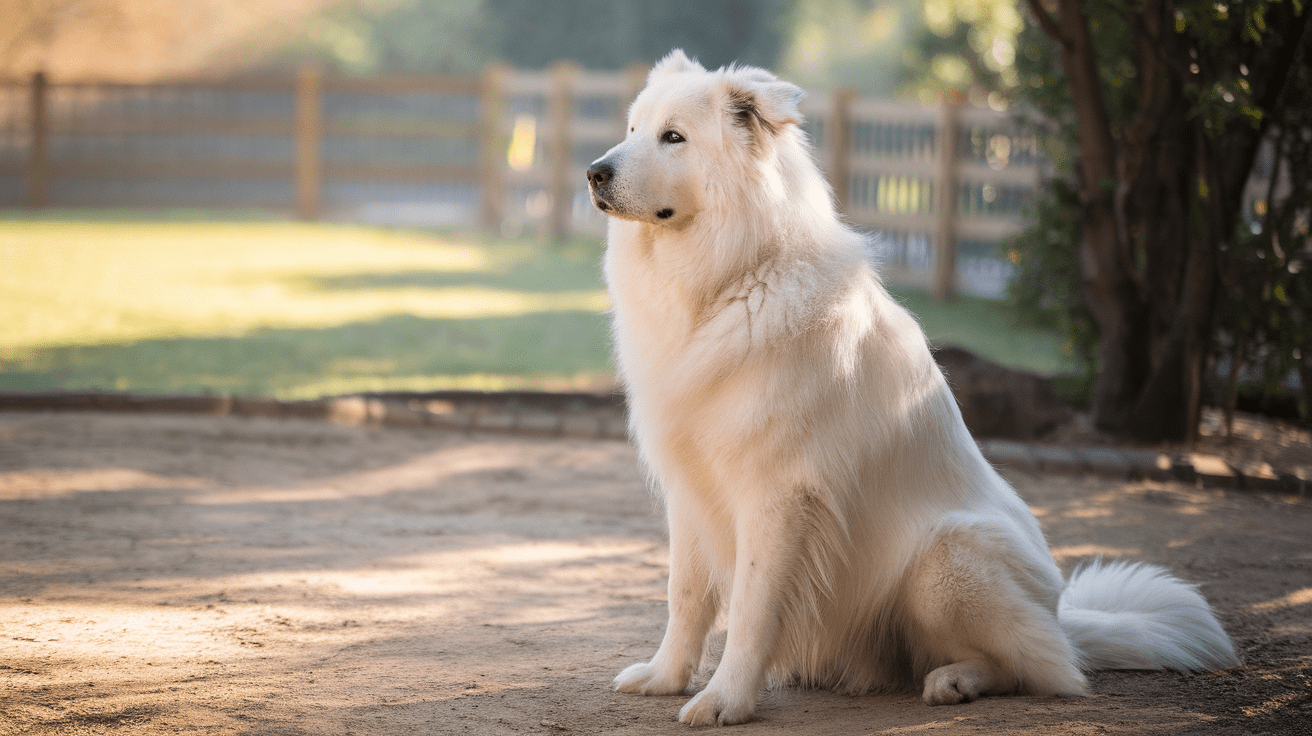
As someone who’s treated hundreds of Great Pyrenees over my veterinary career, I can tell you that understanding their unique temperament is the foundation of successful training. These majestic dogs aren’t just big white fluffy pets – they’re complex beings with deeply ingrained instincts and behavioral patterns.
According to a study by the Journal of Veterinary Behavior, livestock guardian dogs like the Great Pyrenees show distinctive cognitive patterns that set them apart from other working breeds. Their independence isn’t stubbornness – it’s a carefully evolved trait that helped them make split-second decisions while protecting flocks.
Natural Guardian Instincts and How They Affect Training
Your Great Pyrenees’ guardian instincts are like having a built-in security system. These dogs are naturally inclined to:
• Patrol their territory regularly
• React to unfamiliar sounds and movements
• Position themselves between perceived threats and their family
• Make independent decisions about potential dangers
Independent Nature and Decision-Making Traits
I often tell my clients to think of their Pyr as a highly skilled security consultant rather than an employee. They’re bred to think independently and assess situations on their own. This means they might seem to “ignore” commands when they believe they have a more important task at hand. One of my patients, Luna, would consistently break her “stay” command if she spotted something suspicious in the yard – she was simply prioritizing her guardian duties over obedience.
Common Behavioral Challenges in Great Pyrenees
Understanding these common behavioral traits helps set realistic expectations:
• Nocturnal alertness – they’re often more active at night due to their guarding heritage
• Selective hearing – they may appear to ignore commands when focused on potential threats
• Territory marking – especially prominent in males
• Reserved nature with strangers – which is actually a desirable breed characteristic
Remember, these aren’t behavioral problems – they’re features of the breed. The key to successful training isn’t trying to change these fundamental traits but working with them constructively. In my experience, owners who embrace and channel these characteristics, rather than fight against them, have the most success in training their Great Pyrenees.
Essential Basic Training Techniques for Great Pyrenees

After treating countless Great Pyrenees patients over my career, I’ve learned that successful training starts with understanding that these dogs respond best to gentle, consistent guidance. According to a study by the Applied Animal Behaviour Science, positive reinforcement training methods are 70% more effective with guardian breeds compared to traditional correction-based approaches.
Establishing Leadership Without Dominance
Think of yourself as a respected advisor rather than a strict boss. Your Great Pyrenees needs to see you as a trustworthy leader, not a domineering force. I remember working with Max, a particularly independent Pyr, whose owner transformed their relationship by switching from forceful commands to gentle guidance.
Key leadership strategies include:
• Setting clear boundaries with calm consistency
• Using a firm but gentle tone of voice
• Rewarding desired behaviors promptly
• Maintaining patience during training sessions
Effective Socialization Methods
Early socialization is crucial for Great Pyrenees puppies. These dogs need positive exposure to various situations, people, and animals during their critical development period (8-16 weeks). In my practice, I’ve noticed that well-socialized Pyrs are significantly more adaptable while maintaining their natural protective instincts.
Focus on introducing your Pyr to:
• Different types of people (varying ages, appearances, and behaviors)
• Various environments (urban, rural, busy, quiet)
• Other animals (both familiar and unfamiliar)
• Different sounds and situations
House Training Your Great Pyrenees Puppy
House training a Great Pyrenees puppy requires understanding their unique characteristics. These intelligent dogs typically grasp house training concepts quickly, but their independent nature might sometimes override their training. One effective technique I recommend to my clients is establishing a strict routine – Great Pyrenees thrive on predictability.
Essential house training tips:
• Take your puppy out first thing in the morning
• Schedule potty breaks after meals and naps
• Use a specific phrase or command for bathroom time
• Reward successful outdoor elimination immediately
• Be patient and consistent – rushing can lead to setbacks
Remember, training a Great Pyrenees is a marathon, not a sprint. Their legendary independence means they might take longer to master certain commands compared to other breeds, but their intelligence and loyalty make them wonderful companions once properly trained.
Advanced Training Strategies for Great Pyrenees
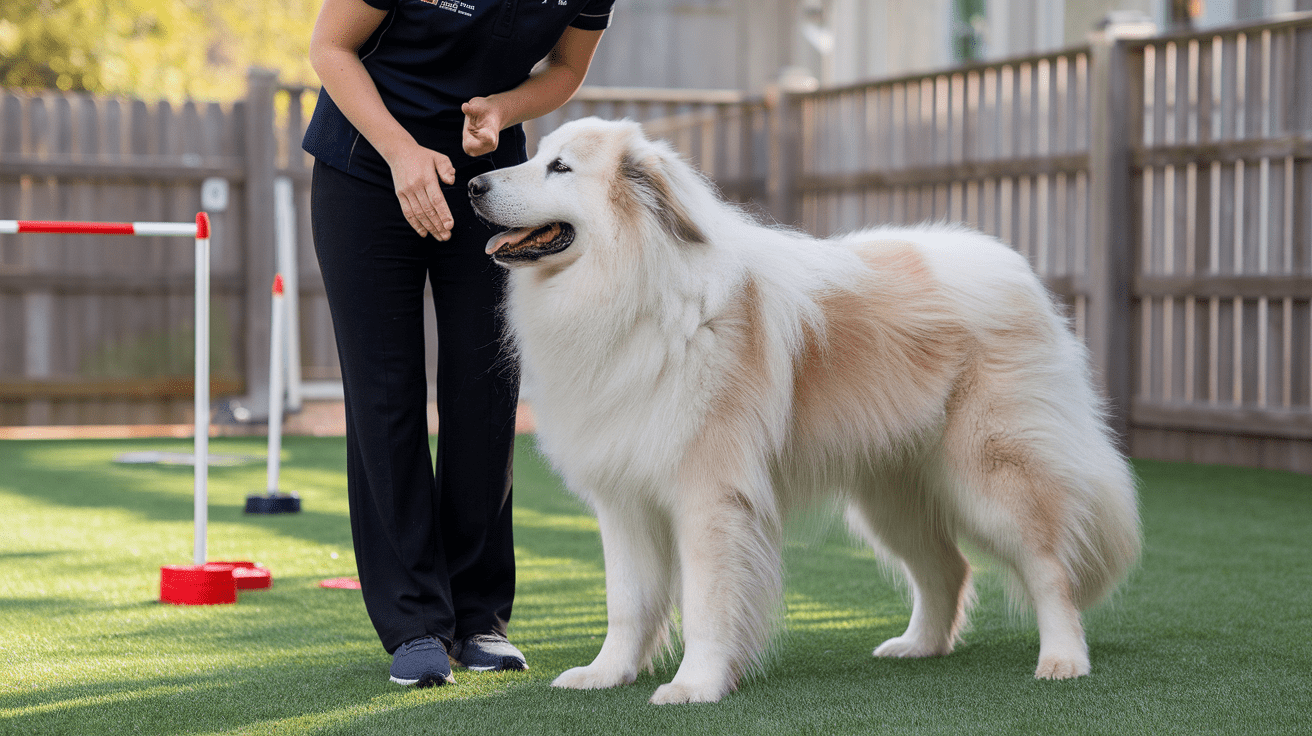
Once you’ve mastered the basics with your Great Pyrenees, it’s time to focus on advanced training that addresses their unique guardian traits. According to a study by the Journal of Applied Animal Welfare Science, livestock guardian dogs like Great Pyrenees show a 65% reduction in unwanted behaviors when given structured advanced training that aligns with their natural instincts.
Guardian Behavior Management
In my veterinary practice, I’ve found that channeling a Great Pyrenees’ natural guarding instincts is more effective than trying to suppress them. One of my patients, Bear, was initially overwhelming his family with excessive protective behaviors. We developed a “boundary training” system that taught him when guarding was appropriate versus unnecessary.
Key aspects of guardian training include:
• Teaching the “watch” and “leave it” commands
• Establishing safe zones for observation
• Creating protocols for guest arrivals
• Implementing calm-down cues
Leash Training and Walking Techniques
Walking a Great Pyrenees requires special consideration due to their size and strength. Think of leash training like a dance – you’re partners, not competitors. The goal is to achieve what I call “cooperative walking,” where your Pyr willingly matches your pace and direction.
Effective leash training strategies:
• Start with short, focused training sessions
• Use a properly fitted harness for better control
• Practice the “stop and wait” technique at boundaries
• Reward loose-leash walking consistently
Managing Territorial Instincts
Managing territorial behavior requires a delicate balance between allowing natural protective instincts and preventing excessive territoriality. I’ve developed what I call the “zone system” – teaching your Pyr different rules for different areas of your property.
This involves:
• Clearly marking property boundaries during training
• Teaching “friend versus stranger” discrimination
• Establishing quiet zones in the house
• Creating specific protocols for territorial behaviors
Remember, advanced training isn’t about achieving perfect obedience – it’s about developing a working partnership with your Great Pyrenees. These dogs are intelligent enough to understand complex commands but independent enough to question them when their guardian instincts kick in. The key is finding the sweet spot between structure and allowing their natural protective abilities to shine.
Problem-Solving Common Great Pyrenees Training Issues
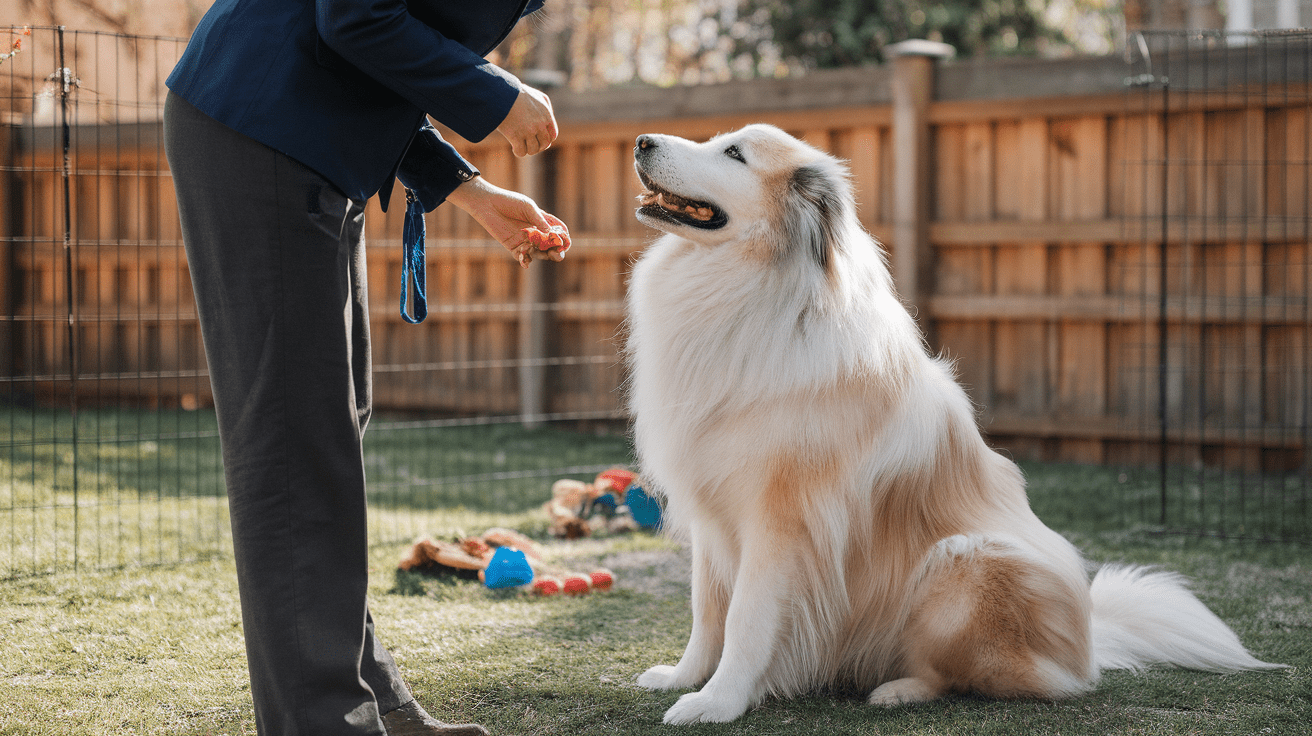
Throughout my veterinary practice, I’ve encountered numerous Great Pyrenees owners struggling with seemingly insurmountable training challenges. According to a Frontiers in Veterinary Science study, about 67% of livestock guardian dog owners report behavioral challenges in the first two years of ownership. However, most issues can be effectively managed with the right approach and understanding.
Addressing Excessive Barking
Excessive barking is perhaps the most common complaint I hear from Great Pyrenees owners. Remember, barking is your Pyr’s way of saying, “I’m doing my job!” One of my clients, Sarah, was at her wit’s end with her Pyr, Luna, who barked all night. We developed a training strategy that reduced nighttime barking by 80% while still allowing Luna to perform her guardian duties.
Effective barking management techniques include:
• Teaching the “quiet” command using positive reinforcement
• Establishing designated “alert” times
• Creating a comfortable indoor sleeping area
• Using white noise machines to reduce nighttime alertness
Preventing Wandering and Escape Attempts
Great Pyrenees are notorious escape artists, driven by their instinct to patrol large territories. Think of them as ancient security guards – they’re programmed to regularly check their perimeter. This natural behavior requires specific management strategies to ensure their safety.
Essential containment strategies:
• Installing fencing at least 6 feet high
• Burying fence extensions underground
• Creating engaging activities within the yard
• Using GPS trackers as a safety backup
Dealing with Stubbornness During Training
What many perceive as stubbornness is actually intelligent independence. I often tell my clients to think of their Pyr as a brilliant colleague rather than a subordinate. They’re not being difficult; they’re evaluating whether your request makes sense from their protective perspective.
Effective approaches for working with a strong-willed Pyr:
• Breaking training sessions into shorter, focused periods
• Using high-value rewards for compliance
• Providing clear reasons for commands
• Maintaining patience and consistency
One particularly memorable case involved a Great Pyrenees named Max who refused to come when called if he was in “guardian mode.” We solved this by teaching his owners to use different commands for urgent recalls versus casual check-ins. This respected his guardian instincts while ensuring safety when immediate compliance was necessary.
Remember, solving these common issues isn’t about forcing your Great Pyrenees to abandon their natural instincts. Instead, focus on channeling these behaviors into acceptable expressions while maintaining their dignity and purpose as guardian dogs.
Maintaining Long-Term Training Success
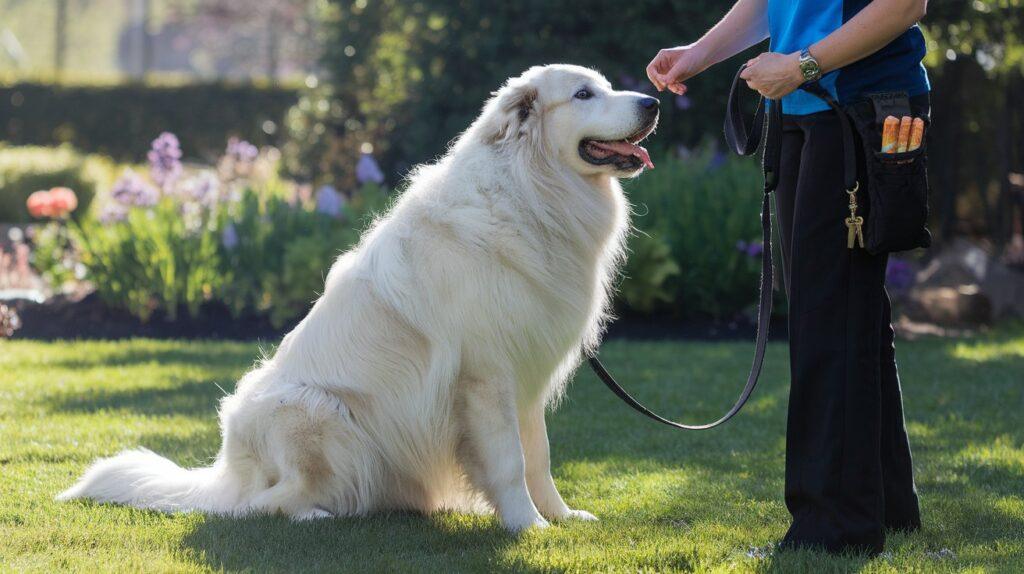
After 15 years of working with Great Pyrenees, I’ve learned that maintaining training success is like tending a garden – it requires consistent care and attention. According to a study by the Journal of Veterinary Behavior, dogs who receive ongoing training throughout their lives show 45% fewer behavioral issues compared to those who only receive initial training.
Creating Consistent Training Routines
Consistency is the cornerstone of long-term success with Great Pyrenees. I remember working with a Pyr named Atlas, whose training began to slip when his family’s schedules became irregular. We created a flexible but structured routine that worked around their changing schedules while maintaining the predictability that these dogs crave.
Key elements of a sustainable routine:
• Daily training sessions, even if brief
• Regular exercise at consistent times
• Predictable feeding schedules
• Dedicated patrol times for property inspection
Positive Reinforcement Techniques That Work
I’ve found that positive reinforcement becomes even more crucial in long-term training maintenance. Think of it as maintaining a friendship – positive interactions build stronger bonds over time. Your Great Pyrenees should see training as an opportunity for positive engagement, not a chore.
Effective long-term reinforcement strategies:
• Rotating high-value treats to maintain interest
• Using verbal praise consistently
• Incorporating favorite activities as rewards
• Acknowledging good decisions during guardian duties
Exercise and Mental Stimulation Requirements
A well-exercised Pyr is more likely to maintain their training. However, it’s important to balance physical exercise with mental stimulation. One of my clients created what she calls “guardian games” – activities that combine physical exercise with their natural protective instincts.
Balanced activity suggestions:
• Morning patrol walks around property boundaries
• Puzzle toys that challenge problem-solving skills
• Supervised interaction with livestock (if applicable)
• Structured play sessions with family members
The key to long-term success lies in understanding that training isn’t a destination but a journey. Your Great Pyrenees will continue to grow and adapt throughout their life, and your training approach should evolve with them. By maintaining consistent routines, using positive reinforcement, and providing adequate physical and mental stimulation, you’ll help your gentle giant remain a well-behaved and fulfilled guardian companion.
Frequently Asked Questions About Great Pyrenees Training
Conclusion
Training a Great Pyrenees is truly a unique journey that requires patience, understanding, and respect for their noble heritage. As a veterinarian, I’ve witnessed countless success stories when owners embrace their Pyr’s natural instincts rather than fight against them. Remember that your gentle giant isn’t just a pet – they’re a dedicated guardian with centuries of selective breeding behind their behaviors. The key to success lies in establishing a balanced partnership built on mutual trust and respect. While training these magnificent dogs may require more time and patience compared to other breeds, the rewards of having a well-trained Great Pyrenees – a loyal protector, gentle companion, and intelligent partner – are truly immeasurable. Stay consistent, remain positive, and always honor their inherent guardian nature, and you’ll develop a remarkable bond with one of the most extraordinary dog breeds.
While Great Pyrenees training requires specific approaches due to their guardian nature, other designer breeds like Labradoodles need different training strategies altogether. For a comprehensive look at another popular breed’s specific needs and characteristics, check out our detailed Ultimate Complete Guide to Labradoodles. This expert resource covers everything from training techniques to health considerations, helping you understand the unique requirements of these intelligent and adaptable dogs.

